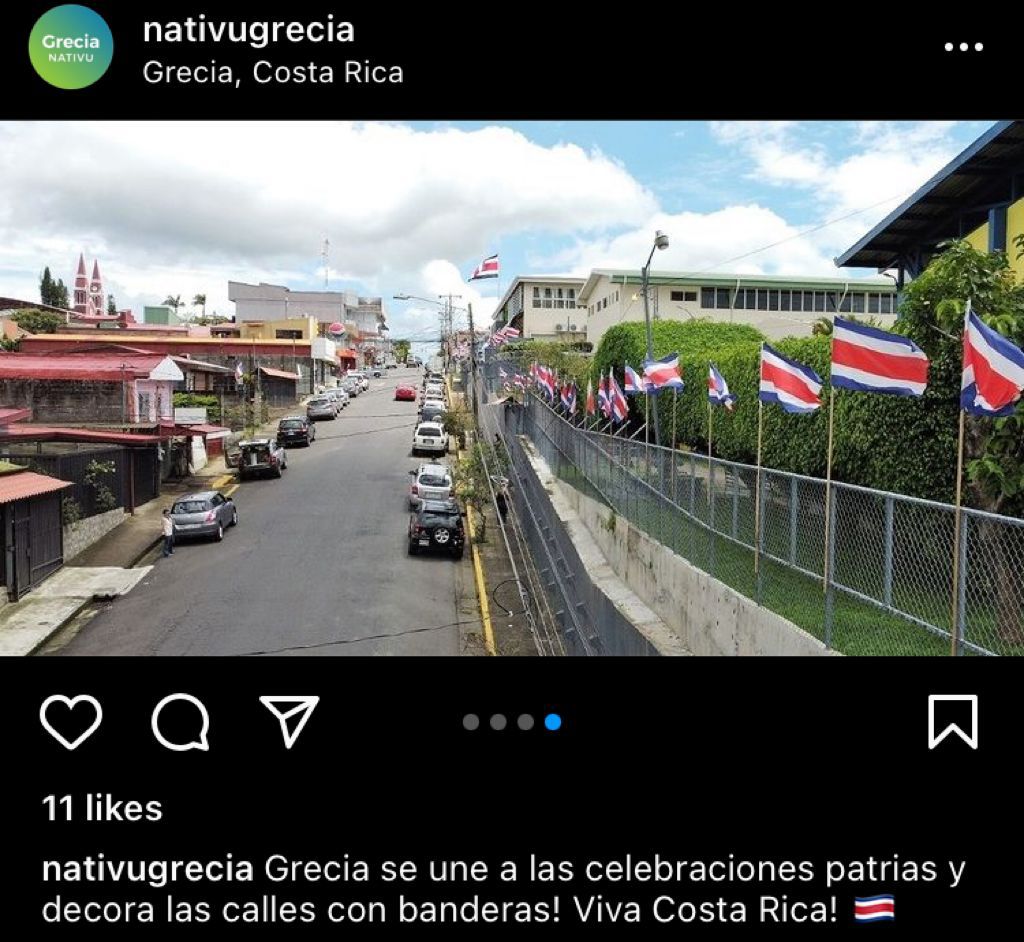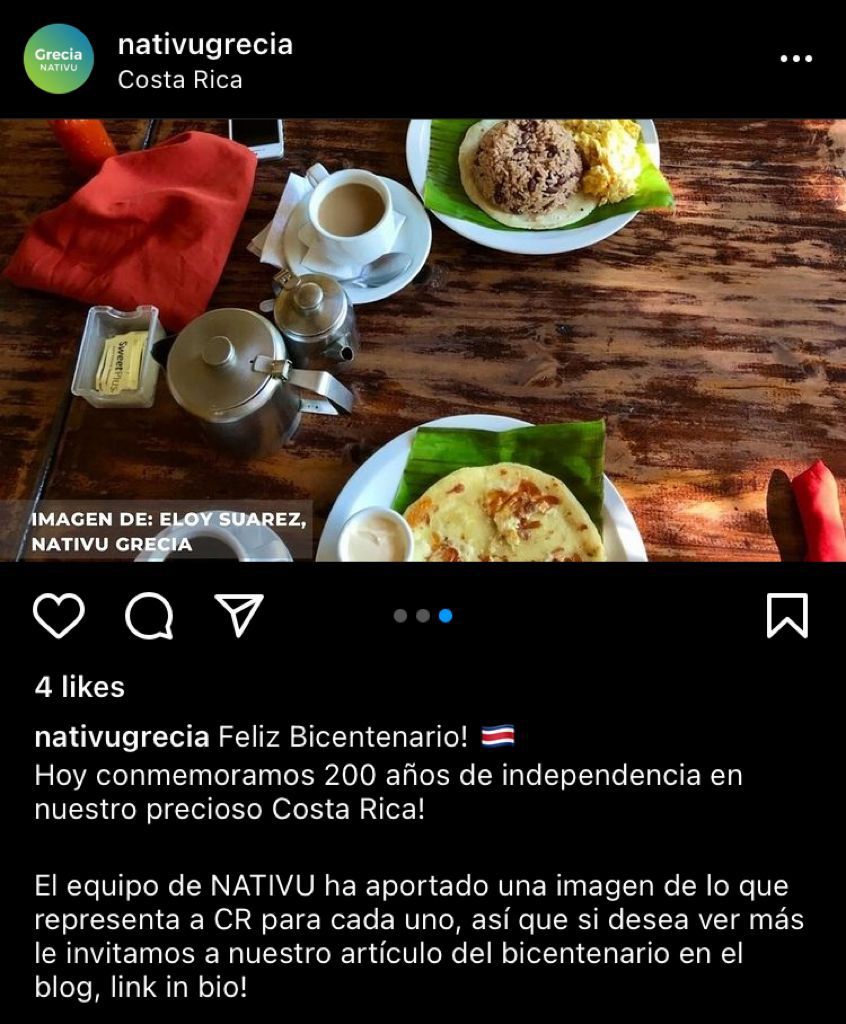The different cities of the country joined the celebration of the Bicentennial of the Independence of Costa Rica. Some decorated their streets, placed flags and other things celebrating September 15 and many people took this time to share with their loved ones by doing some family activities.
Grecia was no exception; this date reminded its neighbors of the patriotic spirit and love for the country. Knowing what a privilege it is to live in this free and sovereign nation.
Costa Rican flags in the streets of Grecia
The Costa Rican flag is formed by three colors placed horizontally, a red stripe in the center between two white stripes, followed by a blue stripe. It was created on September 29, 1848 along with the National Emblem. Tradition tell us that the conception and design of the current flag, since that year, corresponded to Pacifica Fernandez Oreamuno, wife of the first president of Costa Rica; Jose Castro Madriz, inspired by the flag of France.
The colors represent:
Blue: the sky that covers Costa Rica.
White: represents the peace that reigns in Costa Rica.
Red: The love to live, the shedding of blood for freedom, and the generous attitude.
Typical Costa Rican foods to celebrate patriotic spirit
Meats, vegetables, beans, rice, fruits and the delicious cajeta, a sweet that it shares with other Latin American countries and that is irresistible for those with a sweet tooth. Costa Rica’s gastronomy is simple but unmistakably tasty and it is worth trying its typical dishes if you want to fully discover what makes Costa Rica an amazing country.
Here are some dishes that you cannot miss:
Greece is one of those towns that still keeps the essence of what Costa Rica is. Full of mountains and farming areas, with friendly people always ready to help and peaceful environments, this town of Alajuela allows you to wake up and see the beautiful landscapes that generate a feeling of gratitude for living in this beautiful country.









